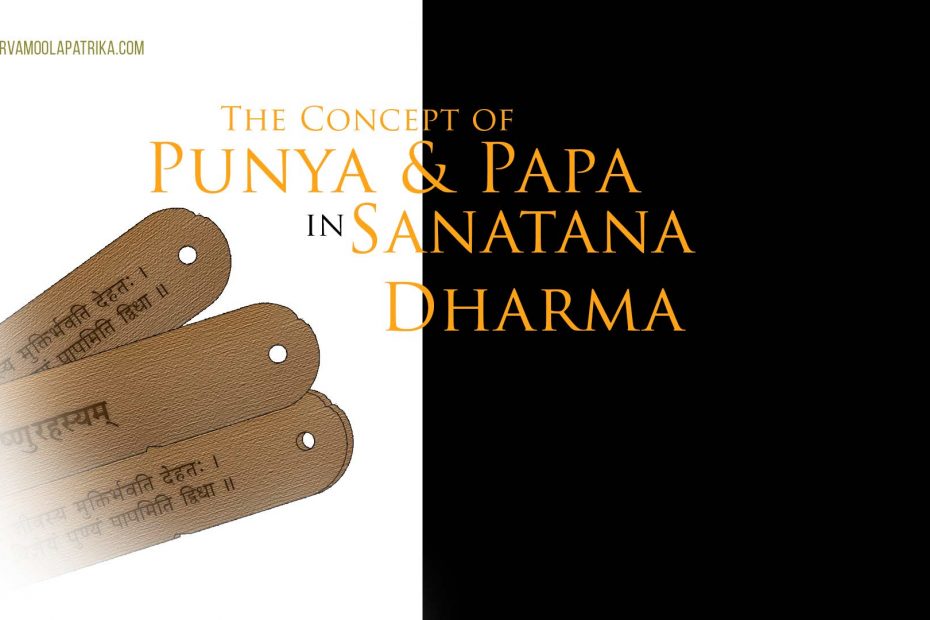Just like puNya, pApa also can be classified similarly into three types.
Tamasa pApa comprises of those bad karmas which are performed intentionally, with atheistic beliefs and with hatred towards paramAtma. These karmas lead to accumulation of more papas and cause the jIva to undergo great suffering in naraka. Even when such a person returns to earth after exhausting most of his pApa in naraka, he is born under difficult circumstances and drifts towards stealing, cruelty and great labor. These in turn grant him more pApa. Eventually he attains andhantamas.
rAjasa pApa is that which is performed by mistake or ignorance. Such pApa gets exhausted by experience sorrow but does not lead to any further pApa or puNya. Such pApa is typically exhausted by things such as accidents (and consequent pain), getting hit by others, suffering insults and so on.
sAtvika pApa causes one to experience sorrow but leads to performance of those types of karmas that grants puNya in future. Such karmas are of course bad in nature but they are performed without any hatred towards others or for any personal benefit. They are performed under compulsion and fear from evil people or are performed to escape from a grave danger.
The performer of such karmas has remorse or paschattaapa in his mind. Such karmas grant puNya. The exhaustion of such satvika pApa happens in the form of hardship during tirthayatra of great kshetras or with experience of heat or cold during a nadi snAna, waiting for a long time to have darshana in a mahAkshEtra, and so on. Therefore one must not curse the suffering and hardship one faces when performing a noble task since it is burning away pApa and leading to puNya.
Multiplication of puNya and pApa: मत्प्रसदद्विजानाति यमो राजखिलानि तु |त्वमप्येवं प्रसदन्मे सर्वज्ञो ह्यसि माचिरम् || “These infinite variations in karma are understood by Yama due to my grace; You too are able to understand all of this due to my blessings and will be known as sarvajna”
Each of the first three varieties of karma – mAnasika, vAchika and kAyika – lead to three further types of karmas. These are sAtvika, tAmasika and rAjasika. Thus there are now nine combinations. Each of these nine types of karmas lead to satvika, tamasika or rajasika karmas again. The variation is now twenty-seven. These further lead to sa-bija and nir-bija types of karmas which again give
birth to more karmas. This cycle continues and therefore there are infinite varieties of karmas.
No ordinary human being can therefore understand the intricacies of karma. Due to the grace of paramAtma, only brahma (and mukhyaprANa as he is the next brahma) and yama can understand these.
The variations in karmas are infinite. These are eternal as well. The jivas who are bound by these karmas are also infinite. That is why one person’s karma is never the same as that of another.
Temporal classification of karma: Yet another classification of karma and puNya-pApa is based on when they fructify. The karma that one experiences at this moment (in this life) is known as prArabdha karma. That which he is yet to perform, whose results he is yet to accumulate is aagami karma. The entire body of karma that one has already accumulated in previous janmas is sanchita karma.
जन्मान्तरे फलवाप्तिः प्रायशः कर्मणां भवेत् |
संचितं सहकारी स्यात् क्रियमाणस्य कर्मणः ||
Lord vishnu, in the vishnu rahasya, says that for the most part jIvas experience results of their karmas only in subsequent janmas. Only if the kriyamANa karma – that karma which we are performing in the present life – greatly supplements the prArabdha that we have brought to this life will the results of our immediate actions fructify in this life itself.
One of the most common questions that arises in every noble person’s mind is “I have never harmed anybody but I am undergoing so much hardship. That other person is the most evil one I have known, yet he enjoys immensely. Why does this happen?”
The above dictum from sri hari explains this great paradox beautifully. Our joys and sorrows and in fact our actions are all primarily driven from the prarabdha karma that we bring to this janma. If our swabhava is satvika in nature, then we will use this particular life to accumulate sAtvika puNya, avoid tAmasika pApa and exhaust sAtvika pApa.
May karmAdhyaksha sri narasimha bless all of us and guide us in overcoming this cycle of puNya and pApa.

Adbhutah
Thank you very much for this detailed write-up on Karma. Can you please suggest a book on shrI bAdarAyaNa’s Vishnu rahasya?